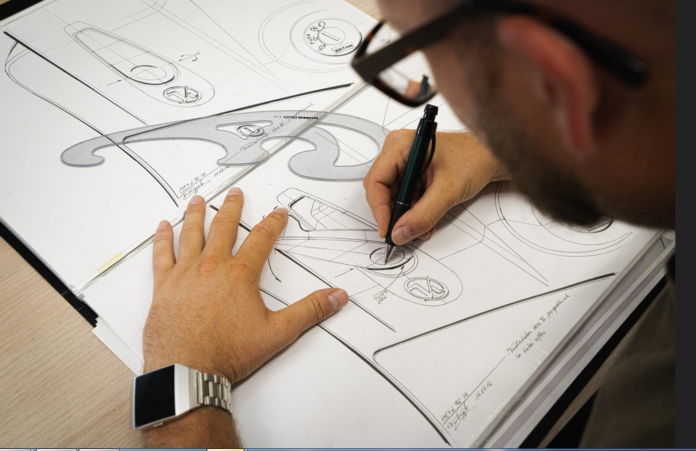According to research by the McKinsey Global Institute, the failure rate of new products stands at around 95%.
There are several reasons for this high failure rate, but one of the biggest is poorly designed products. Good product design can be the difference between success and failure. It can make or break a new product launch.
So how do you optimize your product design process? We’ve put together this list of 5 methods to optimize your product design process. By following these product design practices, you’ll be able to optimize your design process.
What Is Product Design?
Product design is the process of creating a new product. It includes everything from researching and developing the concept to designing and testing the prototype to finally mass-producing and marketing the finished product.
There are many different approaches to product design, but there are some common practices that can help optimize your process. Here are eight methods to optimize your product design and development process:
1. Define Your Product Vision and Strategy
Before you can optimize your product design and development process, you need to clearly understand what you’re trying to achieve. What is the vision for your product? What are your long-term goals and objectives?
Once you have a good grasp of your product strategy, you can start thinking about turning that vision into reality. There are a few key questions you should ask yourself when defining your product vision:
- What problem are you trying to solve?
- Who is your target market?
- What are your core product features?
- How will your product be different from other products in the market?
After you’ve answered these questions, you’ll have a better idea of what you need to do to bring your product vision to life.
2. Define Your Value Proposition
Your value proposition is the unique benefit your product or service offers to customers. It’s what makes your product worth using, and it should be at the core of every decision you make about your product.
Think about why someone would want to use your product. What need does it fill? How does it make their life better? Answering these questions will help you define your value proposition.
You could use a very simple technique to make this process seamless, and that’s working backward.
Start by thinking about the result you want your product to achieve for your customer. Then, think about the features and functionality that would enable that result. Finally, determine what kind of experience would deliver those features and functionality in a way that’s valuable to your customer.
3. Conduct In-depth Product Research
The first step to conducting product research involves defining your success criteria. What does success look like for this product? How will you know if the product is successful?
Answering these questions will help you determine what needs to be included in the product and what can be left out. Once you have established your success criteria, it’s time to start conducting research. There are a few different ways to go about this:
User interviews: Talking to potential users is a great way to get feedback on your product idea. What problems do they have that your product could solve? What do they like/dislike about similar products?
Competitive analysis: Take a look at what other companies are doing in your space. What features do they have? How could you improve upon them?
Expert interviews: Sometimes, it can be helpful to talk to experts in your field, even if they’re not potential users of your product. They can provide valuable insights into your industry and help you generate new ideas.
Once you’ve gathered all this information, it’s time to synthesize it and make decisions about your users.
4. Conduct User Analysis
Conducting user analysis involves creating user personas, which are fictional representations of your target users.
They help you understand your users’ needs, motivations, and behaviors. Creating detailed user personas is an essential part of the product design and development process because it ensures that you’re designing for real people, not just theoretical ones.
User persona should include information like:
- Demographic information: age, gender, location, occupation, etc
- Psychographic information: interests, values, attitudes, lifestyle, etc
- Behavioral information: how they use your product, their goals, etc
- Needs and motivations: what they want to achieve, their pain points, etc
Creating user personas will help you understand your users better and make more informed decisions about your production design. They can also be a useful tool for communicating your product vision to other team members.
The more specific you can be when creating your user personas, the better. The goal is to have a deep understanding of your users so you can design a product that meets their needs.
5. Create a Product Roadmap
A product roadmap is a high-level overview of the features and functionality you want to include in your product. It’s typically organized into phases, with each phase representing a different stage in the development process.
Creating a product roadmap will help you communicate your vision for the product and ensure that everyone is on the same page. It’ll also help you decide what to include in each phase of the development process.
The first step to creating a product roadmap is to define your product vision. What are you trying to achieve with this product? From here, start mapping out the features and functionality that will help you achieve it.
Start factoring things like product packaging design, user experience, and marketing into your roadmap as well.
This is where you think about prototyping and testing, too. What kind of prototypes do you need to create? What kind of prototyping services should you use?
You see, there are several types of prototyping services, including evolutionary, incremental, extreme, and rapid prototyping services. How will you test your product before launch?
The Most Effective Product Design Practices: A Guide
Product design is a critical part of bringing a new product to market. By following these best practices, you can optimize your product design process and increase your chances of success.
Remember to conduct in-depth research, create user personas, and develop a clear roadmap for your product. Don’t forget to prototype and test before launch.
Did you find this article helpful? Share it with your network. If you’re looking for more product design tips, check out our blog where we post new articles every week.










